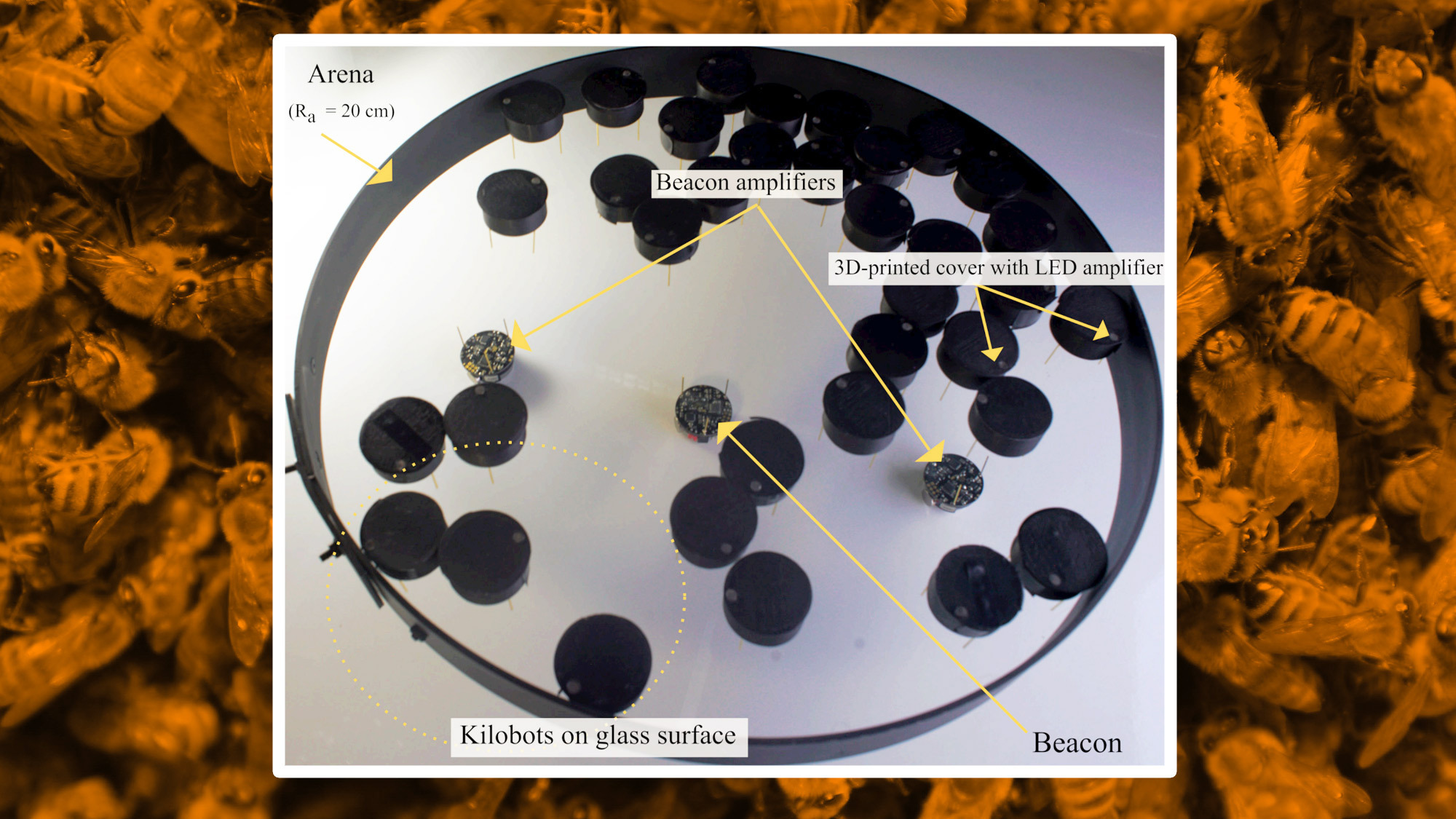

Bees are extremely adept at communicating, even though their brains weigh just two milligrams. They’re so efficient at reaching a consensus, in fact, that researchers created a mini-robot team inspired by their ‘conversations.’
In the search for a new nesting spot, scout bees are known to conduct tiny “waggle dances” to indicate their preferred hive location—slowly winning over swarmmates to join in the process. The moves are tiny but complex, involving moving in figure-eight patterns while shaking their bodies at rapid speed. The bees with the most popular dance part earn final say on where to build. While the three centimeter-wide “kilobots” under the watch of a team at Spain’s University of Barcelona can’t shimmy and shake just yet, they do signal to one another much like bees.
[Related: Bee brains could teach robots to make split-second decisions.]
As detailed in their preprint paper submitted in late October, the team first attached a colored LED light alongside an infrared-light receiver and emitter atop each of a total of 35 kilobots. They then programmed the bots using a modified version of a previously designed mathematical model based on scout bee behavior. From there, the team placed varying numbers of kilobots within an enclosure and let them jitter through their new environment on their trio of toothpick-like legs. During over 70 tests, researchers ordered certain bot clusters to advertise their preferred nesting location “opinion” via signaling between their LED lights’ red, blue, and green hues.
Every kilobot team achieved a group consensus within roughly 30 minutes, no matter the team size or environmental density. Such reliable decision making—even in machines capable of transmitting just 9 bytes of information at a time—could one day prove invaluable across a number of industries.
[Related: Bat-like echolocation could help these robots find lost people.]
“We believe that in the near future there are going to be simple robots that will do jobs that we don’t want to do, and it will be very important that they make decisions in a decentralized, autonomous manner,” Carmen Miguel, one of the study’s co-authors, explained to New Scientist on November 7.
During invasive medical procedures, for instance, tiny robots could maneuver within a patient’s body, communicating with one another without the need for complex electronics. Similarly, cheap bots could coordinate with one another while deployed during search-and-rescue missions. In such scenarios, the environmental dangers often prevent the use of expensive robots due to risk of damage or destruction.
Above it all, however, the University of Barcelona team believes their work draws attention to often underappreciated aspects of everyday existence. The team’s paper abstract concludes: “By shedding light on this crucial layer of complexity… we emphasize the significance of factors typically overlooked but essential to living systems and life itself.”
